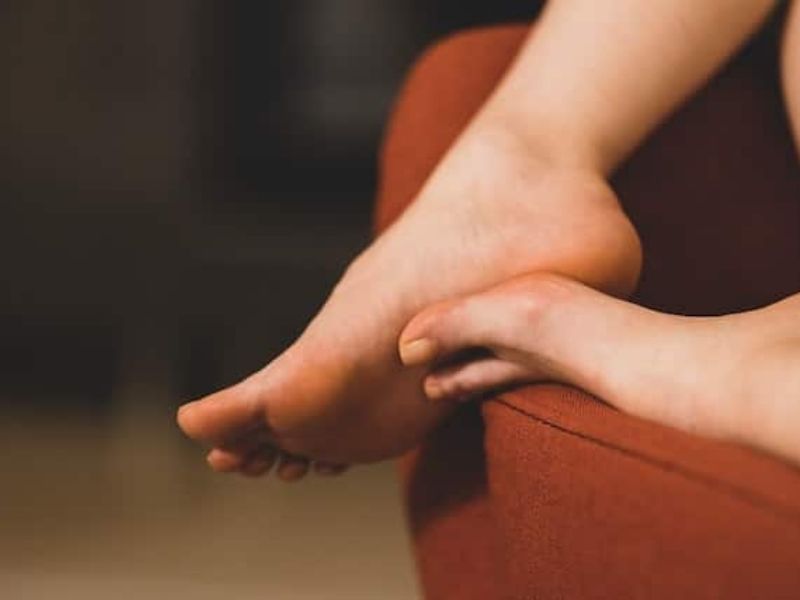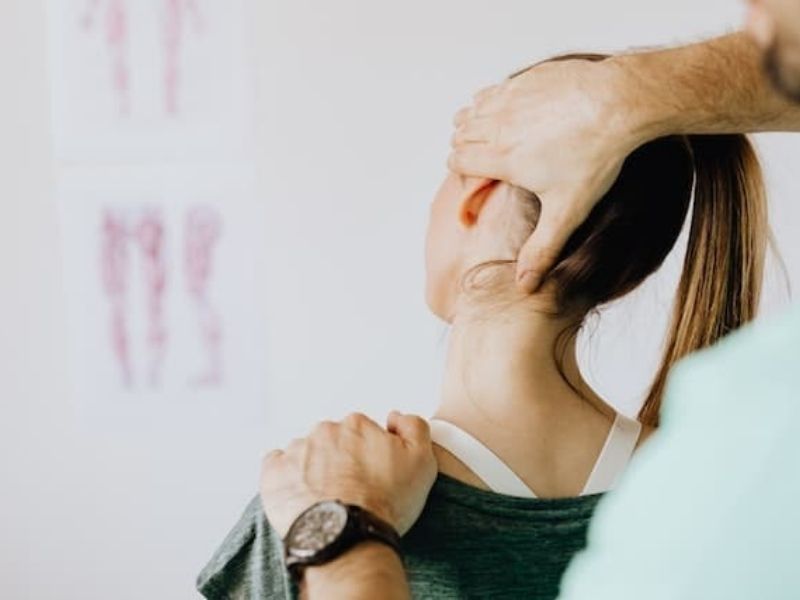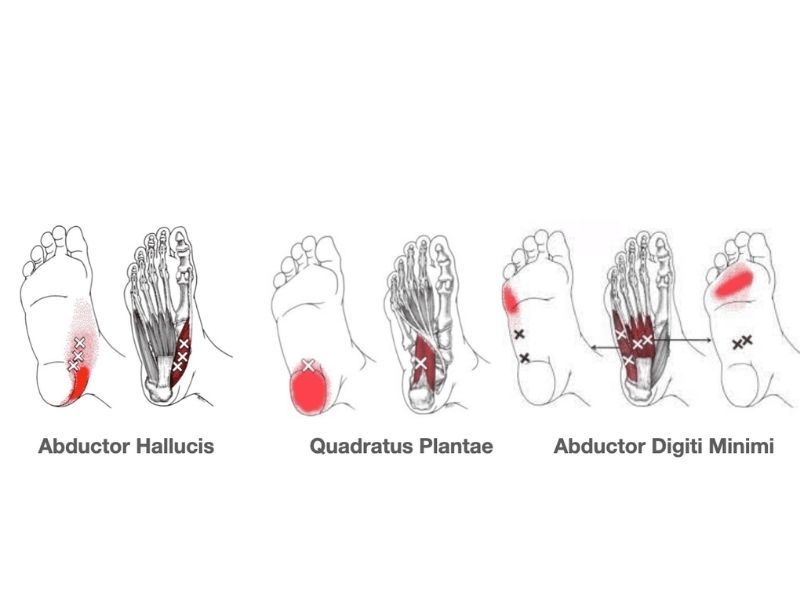A Step-by-Step Guide to DIY Foot Massage for Improved Health and Wellbeing

Table of Contents
- - Introduction
- - Benefits of Foot Massage
- - 1. Improved circulation
- - 2. Stress relief
- - 3. Reduced pain and discomfort
- - 4. Enhanced relaxation and sleep quality
- - 5. Boosted immune system
- - Basic Anatomy of the Foot
- - Essential DIY Foot Massage Techniques
- - 1. Warming up the feet
- - 2. Massaging the arch of the foot
- - 3. Working on the heel and Achilles tendon
- - 4. Addressing the ball of the foot and toes
- - 5. Incorporating self-massage for foot pressure points
- - Using Tools and Props for DIY Foot Massage
- - Integrating Foot Massage into Your Daily Routine
- - Tips for a Successful DIY Foot Massage
- - Conclusion
Your feet work hard every day, carrying you through countless tasks and activities. It’s essential to give them the attention they deserve. Learning how to massage your feet for better health and wellbeing can improve your overall health, relieve stress, and reduce pain. In this step-by-step guide, we’ll explore DIY foot massage techniques to help you achieve improved health and wellbeing.

Introduction
Did you know that your feet contain numerous pressure points and nerve endings that can influence your entire body? By taking care of your feet through regular massage, you can experience a range of benefits, from improved circulation to stress relief. Let’s dive into the world of DIY foot massage and discover how to keep your feet happy and healthy.
Benefits of Foot Massage
Foot massage has numerous benefits for your overall health and wellbeing. Some of the most significant advantages include:
1. Improved circulation
Foot massage helps to stimulate blood flow and improve circulation throughout the body, which is particularly important for people who spend long periods sitting or standing (1).
2. Stress relief
Massage has been shown to reduce the stress hormone cortisol, helping you relax and unwind (2).
3. Reduced pain and discomfort
By focusing on specific pressure points, you can alleviate foot pain and discomfort from various conditions, such as plantar fasciitis or heel spurs (3).
4. Enhanced relaxation and sleep quality
Massage helps to promote relaxation and can improve the quality of your sleep, making you feel more rested and refreshed (4).
5. Boosted immune system
Studies suggest that regular massage may help to boost your immune system by increasing the production of white blood cells (5).
Basic Anatomy of the Foot
Before diving into foot massage techniques, it’s essential to understand the basic anatomy of the foot. Your foot is divided into three main areas:
- Arch: The curved part of the foot that provides support and absorbs shock.
- Heel: The back part of the foot, which bears much of your body weight when you stand or walk.
- Ball: The front part of the foot, just behind your toes, that helps with balance and propulsion.
By focusing on these areas and identifying foot pressure points, you can give yourself an effective DIY foot massage.
Essential DIY Foot Massage Techniques
Follow these steps to perform a DIY foot massage that targets essential pressure points:
1. Warming up the feet
Start by soaking your feet in warm water for 10 minutes or using a warm towel to help relax the muscles.
2. Massaging the arch of the foot
Use your thumbs to apply firm pressure and make small circles along the arch of your foot. Gradually work your way from the heel to the ball of the foot.
3. Working on the heel and Achilles tendon
With one hand, hold your foot at the ankle. Use the other hand to gently massage the heel and Achilles tendon with long, sweeping motions.
4. Addressing the ball of the foot and toes
Gently squeeze and pull each toe, starting from the big toe and working your way to the little toe. Massage the ball of the foot using your thumbs, making small circles.
5. Incorporating self-massage for foot pressure points
To target specific pressure points, apply firm pressure using your thumbs or a massage tool. Hold the pressure for 10-15 seconds, then release. Repeat this process on any areas of discomfort or tension.
Using Tools and Props for DIY Foot Massage
To enhance your DIY foot massage, consider incorporating the following tools and props:
1. Foot Massage Balls – Spiky Balls
Massage balls can be used to target specific pressure points and provide deep tissue relief. Place the ball under your foot and roll it back and forth, applying pressure as needed.
2. Foot Massage Mats
Foot massage mats (also called acupressure mats) are useful for massaging the entire foot and can help to relieve tension in the arch, heel, and ball of the foot. Place your foot on the mat and move it back and forth, applying pressure as needed.
3. Percussion Massage Guns
Percussive massage tools can help you apply targeted pressure to specific areas of your foot.
Integrating Foot Massage into Your Daily Routine
To reap the full benefits of DIY foot massage, it’s essential to incorporate it into your daily routine. Here are some tips to help you get started:
- Determine a consistent schedule: Choose a specific time each day for your foot massage to help create a habit. Whether it’s during your lunch break, after work, or before bedtime, consistency is key to reaping the rewards of your massage practice.
- Prepare your space: Dedicate a comfortable and quiet area in your home for your foot massage sessions. Keep it clean, uncluttered, and inviting, with a comfortable chair, cushions, or even a yoga mat for support.
- Learn various massage techniques: Explore different massage techniques to find the ones that work best for you. Experiment with using your hands, knuckles, or even massage tools to address various pressure points and areas of tension in your feet.
- Stay hydrated and mindful: Proper hydration is essential for overall health and can improve the effectiveness of your foot massage. Be mindful of your body’s needs and drink water before and after your massage session to support muscle relaxation and recovery.
Tips for a Successful DIY Foot Massage
To ensure your DIY foot massage is effective and enjoyable, keep these tips in mind:
- Start slowly and gently: Begin with gentle pressure and gradually increase intensity as needed, always listening to your body’s signals.
- Listen to your body and adjust pressure accordingly: If you feel pain or discomfort during your massage, ease off the pressure or try a different technique.
- Consistency and frequency: Aim for regular foot massage sessions, ideally daily or several times per week, to maximize the benefits.
- Know when to seek professional help: If you have persistent foot pain or discomfort, consult with a healthcare professional or licensed massage therapist for guidance.
Conclusion
DIY foot massage is a simple and effective way to improve your overall health and wellbeing. By understanding the basic anatomy of your feet, using targeted massage techniques, and incorporating helpful tools and props, you can experience the many benefits of regular foot massage. Don’t underestimate the power of caring for your feet—start incorporating foot massage into your daily routine and discover the positive impact it can have on your entire body.
Here are the cited references included in the article:
- Harvard Health Publishing. (2018). The importance of good foot care. Retrieved from https://www.health.harvard.edu/staying-healthy/the-importance-of-good-foot-care
- Field, T. (2010). Massage therapy research review. Complementary Therapies in Clinical Practice, 16(4), 224-229. Retrieved from https://www.sciencedirect.com/science/article/abs/pii/S1744388109000894
- Alvarez, D. J., & Rockwell, P. G. (2002). Trigger points: diagnosis and management. American Family Physician, 65(4), 653-660. Retrieved from https://www.aafp.org/afp/2002/0215/p653.html
- Field, T., Diego, M., & Hernandez-Reif, M. (2007). Massage therapy research. Developmental Review, 27(1), 75-89. Retrieved from https://www.sciencedirect.com/science/article/abs/pii/S0273229706000829
- Rapaport, M. H., Schettler, P., & Bresee, C. (2010). A preliminary study of the effects of a single session of Swedish massage on hypothalamic–pituitary–adrenal and immune function in normal individuals. Journal of Alternative and Complementary Medicine, 16(10), 1079-1088. Retrieved from https://www.liebertpub.com/doi/10.1089/acm.2009.0634
Sam Visnic
I’ve spent my life studying the fundamental aspects of human health with a focus on movement and clinical massage therapy. In a world of specialists, surgical procedures, drugs and quick fix remedies, I’m committed to finding and developing strategies that help people stuck at the “gap”. Over the last 20 years I’ve studied dozens of systems and methodologies for uncovering the root cause of aches and pains, along with postural and movement issues. Pain science, the art and science of hands-on soft tissue massage techniques, myofascial release, and coaching movement is essential in my practice. Integrating different methods but above all deciphering WHEN to use different techniques with different people and situations, along with integration of movements that people want to be able to do again is the key to long term success with my incredible track record with clients. Understanding the various elements that contribute to conditions and the power of communication and education makes my Release Muscle Therapy program separate from other hands-on therapy approaches.
Blogs You May Be Interested In
Categories
-
Deep Gluteal Pain Syndrome
-
Deltoids
-
Fallbrook
-
Foam Rolling
-
Glutes
-
Hamstrings
-
Hypnosis For Pain
-
Lats
-
Levator Scapulae
-
Lifestyle
-
Massage Therapy
-
Mobility
-
Movement and Exercise
-
Murrieta
-
Muscles
-
Nutrition
-
Obliques
-
Pain
-
Pectorals
-
Piriformis
-
Plantar Fasciitis
-
Product Review
-
Psoas
-
Quadratus Lumborum
-
Quadriceps
-
Rhomboids
-
Serratus Anterior
-
SI Joint
-
Sternocleidomastoid
-
Stretching
-
Subscapularis
-
Temecula
-
TMJ
-
Trapezius
-
Uncategorized
















